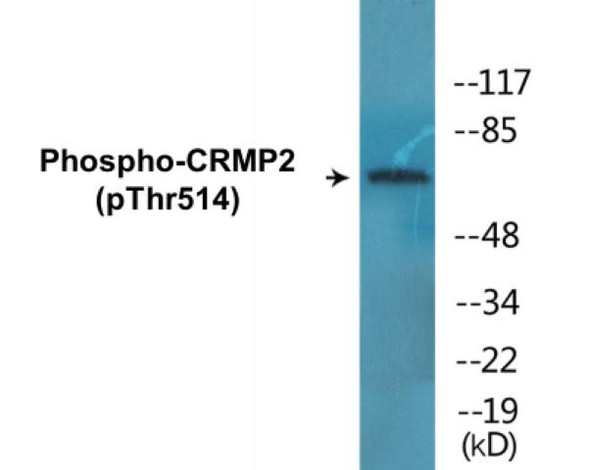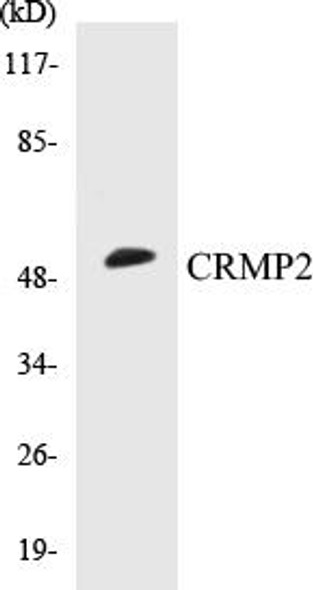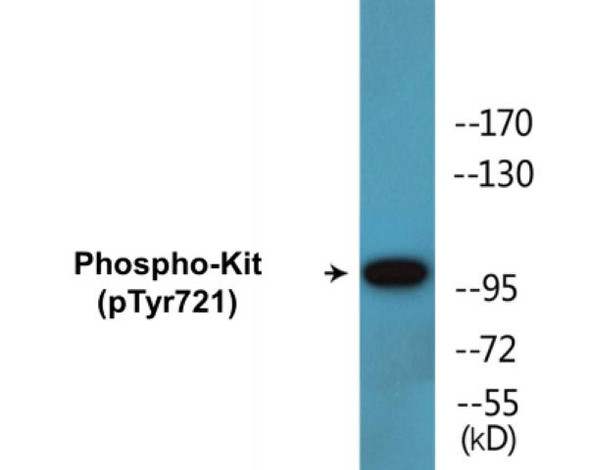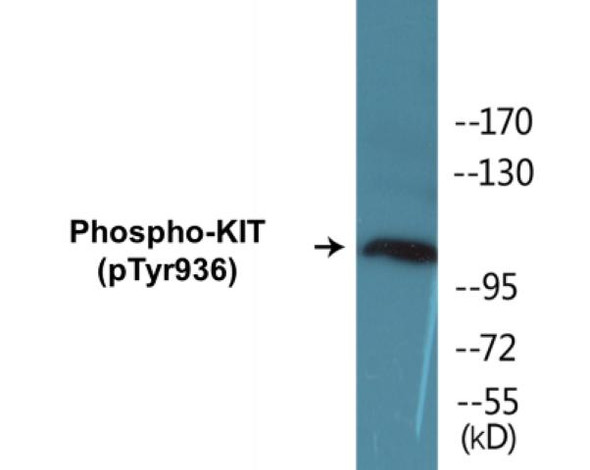Description
CRMP2 (Phospho-Thr509)Colorimetric Cell-Based ELISA Kit
The CRMP2 (Collapsin Response Mediator Protein 2) Phospho-Thr509 Colorimetric Cell-Based ELISA Kit from Assay Genie is a powerful tool for studying the phosphorylation of CRMP2 at threonine 509 in cell-based experiments. This kit allows for the accurate and sensitive detection of CRMP2 phosphorylation levels, providing researchers with valuable insights into the role of CRMP2 in cell signaling pathways.CRMP2 is a key regulator of axon guidance and neuronal development, with dysregulation of CRMP2 phosphorylation implicated in neurodegenerative diseases such as Alzheimer's and Parkinson's.
By enabling the quantification of CRMP2 phosphorylation at threonine 509, this ELISA kit is essential for understanding the underlying mechanisms of these diseases and developing targeted therapeutics.With its high sensitivity and specificity, the CRMP2 Phospho-Thr509 Colorimetric Cell-Based ELISA Kit offers researchers a reliable and reproducible method for quantifying CRMP2 phosphorylation levels in cell culture samples. This valuable tool is ideal for a wide range of research applications in the fields of neuroscience, cell biology, and drug discovery.
| Product Name: | CRMP2 (Phospho-Thr509) Colorimetric Cell-Based ELISA |
| Product Code: | CBCAB01677 |
| ELISA Type: | Cell-Based |
| Target: | CRMP2 (Phospho-Thr509) |
| Reactivity: | Human, Mouse, Rat |
| Dynamic Range: | > 5000 Cells |
| Detection Method: | Colorimetric 450 nm |
| Format: | 2 x 96-Well Microplates |
The CRMP2 (Phospho-Thr509) Colorimetric Cell-Based ELISA Kit is a convenient, lysate-free, high throughput and sensitive assay kit that can detect CRMP2 protein phosphorylation and expression profile in cells. The kit can be used for measuring the relative amounts of phosphorylated CRMP2 in cultured cells as well as screening for the effects that various treatments, inhibitors (ie. siRNA or chemicals), or activators have on CRMP2 phosphorylation.
Qualitative determination of CRMP2 (Phospho-Thr509) concentration is achieved by an indirect ELISA format. In essence, CRMP2 (Phospho-Thr509) is captured by CRMP2 (Phospho-Thr509)-specific primary (1ø) antibodies while the HRP-conjugated secondary (2ø) antibodies bind the Fc region of the 1ø antibody. Through this binding, the HRP enzyme conjugated to the 2ø antibody can catalyze a colorimetric reaction upon substrate addition. Due to the qualitative nature of the Cell-Based ELISA, multiple normalization methods are needed:
| 1. | A monoclonal antibody specific for human GAPDH is included to serve as an internal positive control in normalizing the target absorbance values. |
| 2. | Following the colorimetric measurement of HRP activity via substrate addition, the Crystal Violet whole-cell staining method may be used to determine cell density. After staining, the results can be analysed by normalizing the absorbance values to cell amounts, by which the plating difference can be adjusted. |
| Database Information: | Gene ID: 1808, UniProt ID: Q16555, OMIM: 602463, Unigene: Hs.173381 |
| Gene Symbol: | DPYSL2 |
| Sub Type: | Phospho |
| UniProt Protein Function: | CRMP-2: a microtubule-binding protein necessary for signaling by class 3 semaphorins and subsequent remodeling of the cytoskeleton. Plays a role in axon guidance, neuronal growth cone collapse and cell migration. Homotetramer, and heterotetramer with CRMP1, CRMP-3, CRMP-4, or CRMP-5. Interacts through its C-terminus with the C-terminus of CYFIP1. Interacts with 5-hydroxytryptamine receptor 4 (5-HT(4)). |
| UniProt Protein Details: | Protein type:Motility/polarity/chemotaxis; Microtubule-binding Chromosomal Location of Human Ortholog: 8p22-p21 Cellular Component: microtubule; growth cone; mitochondrion; membrane; cell soma; dendrite; terminal button; cytosol Molecular Function:protein binding; dihydropyrimidinase activity; protein kinase binding Biological Process: response to drug; axon guidance; nervous system development; olfactory bulb development; response to amphetamine; synaptic vesicle transport; positive regulation of glutamate secretion; cytoskeleton organization and biogenesis; endocytosis; signal transduction; response to cocaine; pyrimidine base catabolic process; spinal cord development; nucleobase, nucleoside, nucleotide and nucleic acid metabolic process |
| NCBI Summary: | This gene encodes a member of the collapsin response mediator protein family. Collapsin response mediator proteins form homo- and hetero-tetramers and facilitate neuron guidance, growth and polarity. The encoded protein promotes microtubule assembly and is required for Sema3A-mediated growth cone collapse, and also plays a role in synaptic signaling through interactions with calcium channels. This gene has been implicated in multiple neurological disorders, and hyperphosphorylation of the encoded protein may play a key role in the development of Alzheimer's disease. Alternatively spliced transcript variants encoding multiple isoforms have been observed for this gene. [provided by RefSeq, Sep 2011] |
| UniProt Code: | Q16555 |
| NCBI GenInfo Identifier: | 3122051 |
| NCBI Gene ID: | 1808 |
| NCBI Accession: | Q16555.1 |
| UniProt Secondary Accession: | Q16555,O00424, A8K5H2, B4DR31, D3DSS7, |
| UniProt Related Accession: | Q16555 |
| Molecular Weight: | |
| NCBI Full Name: | Dihydropyrimidinase-related protein 2 |
| NCBI Synonym Full Names: | dihydropyrimidinase-like 2 |
| NCBI Official Symbol: | DPYSL2 |
| NCBI Official Synonym Symbols: | DRP2; N2A3; CRMP2; DRP-2; ULIP2; CRMP-2; DHPRP2; ULIP-2 |
| NCBI Protein Information: | dihydropyrimidinase-related protein 2; collapsin response mediator protein hCRMP-2; unc-33-like phosphoprotein 2 |
| UniProt Protein Name: | Dihydropyrimidinase-related protein 2 |
| UniProt Synonym Protein Names: | Collapsin response mediator protein 2; CRMP-2; N2A3; Unc-33-like phosphoprotein 2; ULIP-2 |
| Protein Family: | Dihydropyrimidinase-related protein |
| UniProt Gene Name: | DPYSL2 |
| UniProt Entry Name: | DPYL2_HUMAN |
| Component | Quantity |
| 96-Well Cell Culture Clear-Bottom Microplate | 2 plates |
| 10X TBS | 24 mL |
| Quenching Buffer | 24 mL |
| Blocking Buffer | 50 mL |
| 15X Wash Buffer | 50 mL |
| Primary Antibody Diluent | 12 mL |
| 100x Anti-Phospho Target Antibody | 60 µL |
| 100x Anti-Target Antibody | 60 µL |
| Anti-GAPDH Antibody | 60 µL |
| HRP-Conjugated Anti-Rabbit IgG Antibody | 12 mL |
| HRP-Conjugated Anti-Mouse IgG Antibody | 12 mL |
| SDS Solution | 12 mL |
| Stop Solution | 24 mL |
| Ready-to-Use Substrate | 12 mL |
| Crystal Violet Solution | 12 mL |
| Adhesive Plate Seals | 2 seals |
The following materials and/or equipment are NOT provided in this kit but are necessary to successfully conduct the experiment:
- Microplate reader able to measure absorbance at 450 nm and/or 595 nm for Crystal Violet Cell Staining (Optional)
- Micropipettes with capability of measuring volumes ranging from 1 µL to 1 ml
- 37% formaldehyde (Sigma Cat# F-8775) or formaldehyde from other sources
- Squirt bottle, manifold dispenser, multichannel pipette reservoir or automated microplate washer
- Graph paper or computer software capable of generating or displaying logarithmic functions
- Absorbent papers or vacuum aspirator
- Test tubes or microfuge tubes capable of storing ≥1 ml
- Poly-L-Lysine (Sigma Cat# P4832 for suspension cells)
- Orbital shaker (optional)
- Deionized or sterile water
*Note: Protocols are specific to each batch/lot. For the correct instructions please follow the protocol included in your kit.
| Step | Procedure |
| 1. | Seed 200 µL of 20,000 adherent cells in culture medium in each well of a 96-well plate. The plates included in the kit are sterile and treated for cell culture. For suspension cells and loosely attached cells, coat the plates with 100 µL of 10 µg/ml Poly-L-Lysine (not included) to each well of a 96-well plate for 30 minutes at 37 °C prior to adding cells. |
| 2. | Incubate the cells for overnight at 37 °C, 5% CO2. |
| 3. | Treat the cells as desired. |
| 4. | Remove the cell culture medium and rinse with 200 µL of 1x TBS, twice. |
| 5. | Fix the cells by incubating with 100 µL of Fixing Solution for 20 minutes at room temperature. The 4% formaldehyde is used for adherent cells and 8% formaldehyde is used for suspension cells and loosely attached cells. |
| 6. | Remove the Fixing Solution and wash the plate 3 times with 200 µL 1x Wash Buffer for five minutes each time with gentle shaking on the orbital shaker. The plate can be stored at 4 °C for a week. |
| 7. | Add 100 µL of Quenching Buffer and incubate for 20 minutes at room temperature. |
| 8. | Wash the plate 3 times with 1x Wash Buffer for 5 minutes each time. |
| 9. | Add 200 µL of Blocking Buffer and incubate for 1 hour at room temperature. |
| 10. | Wash 3 times with 200 µL of 1x Wash Buffer for 5 minutes each time. |
| 11. | Add 50 µL of 1x primary antibodies Anti-CRMP2 (Phospho-Thr509) Antibody, Anti-CRMP2 Antibody and/or Anti-GAPDH Antibody) to the corresponding wells, cover with Parafilm and incubate for 16 hours (overnight) at 4 °C. If the target expression is known to be high, incubate for 2 hours at room temperature. |
| 12. | Wash 3 times with 200 µL of 1x Wash Buffer for 5 minutes each time. |
| 13. | Add 50 µL of 1x secondary antibodies (HRP-Conjugated AntiRabbit IgG Antibody or HRP-Conjugated Anti-Mouse IgG Antibody) to corresponding wells and incubate for 1.5 hours at room temperature. |
| 14. | Wash 3 times with 200 µL of 1x Wash Buffer for 5 minutes each time. |
| 15. | Add 50 µL of Ready-to-Use Substrate to each well and incubate for 30 minutes at room temperature in the dark. |
| 16. | Add 50 µL of Stop Solution to each well and read OD at 450 nm immediately using the microplate reader. |
(Additional Crystal Violet staining may be performed if desired – details of this may be found in the kit technical manual.)






